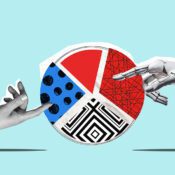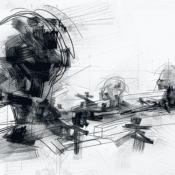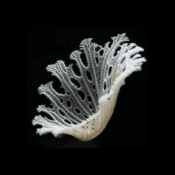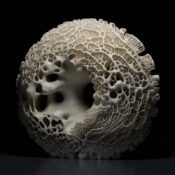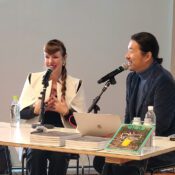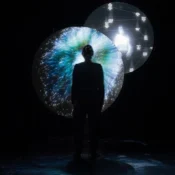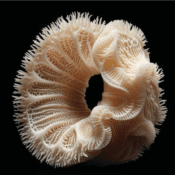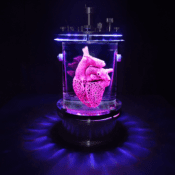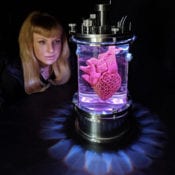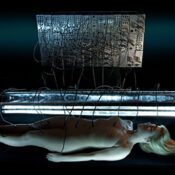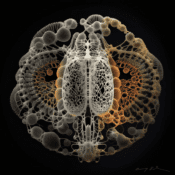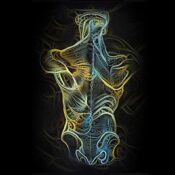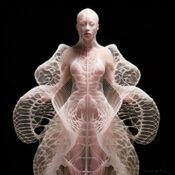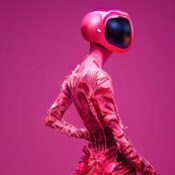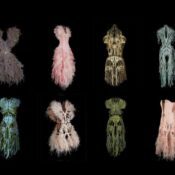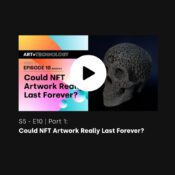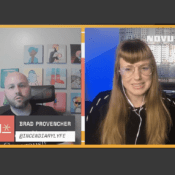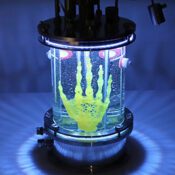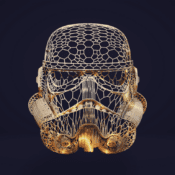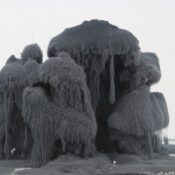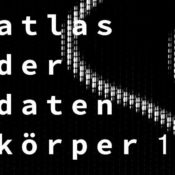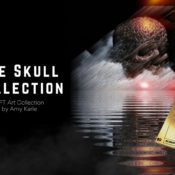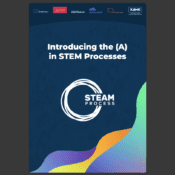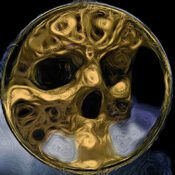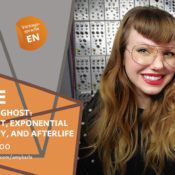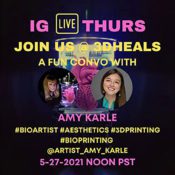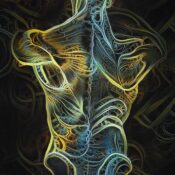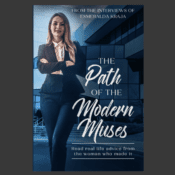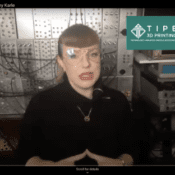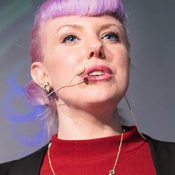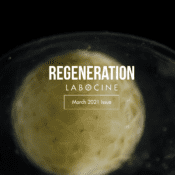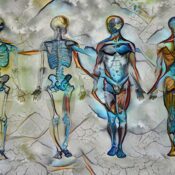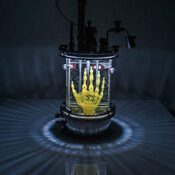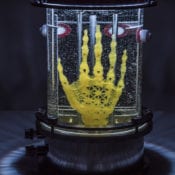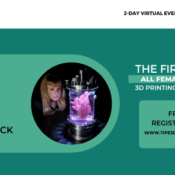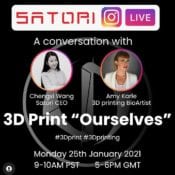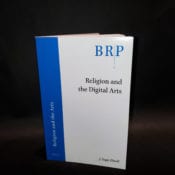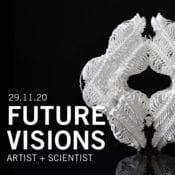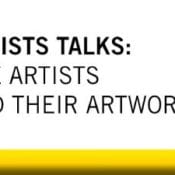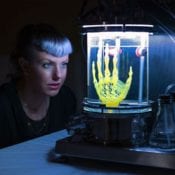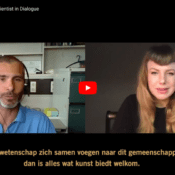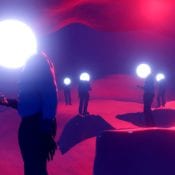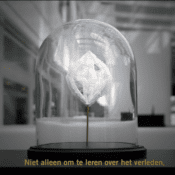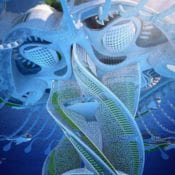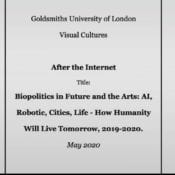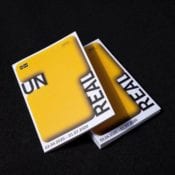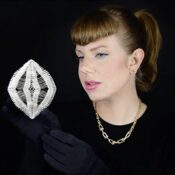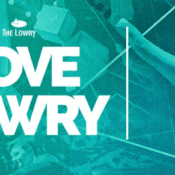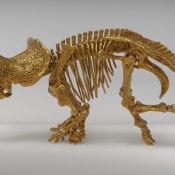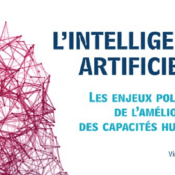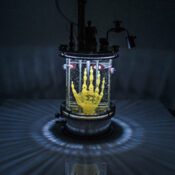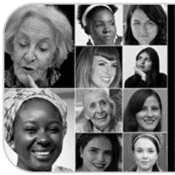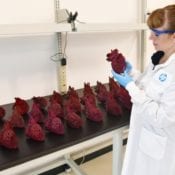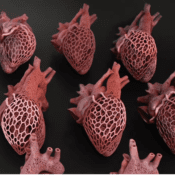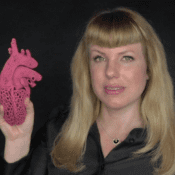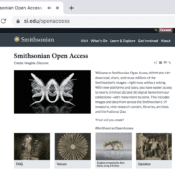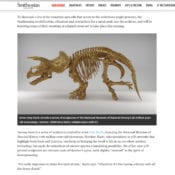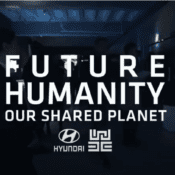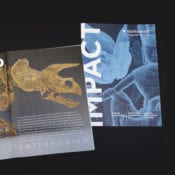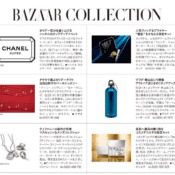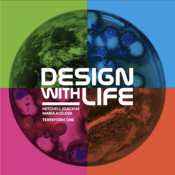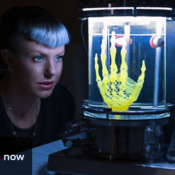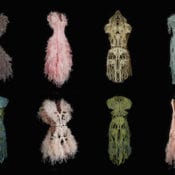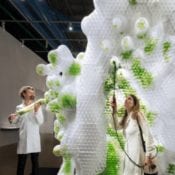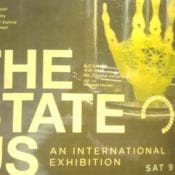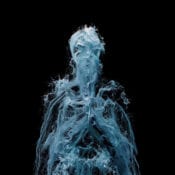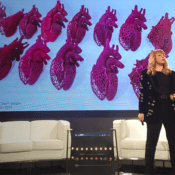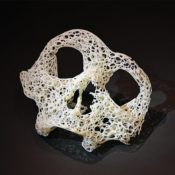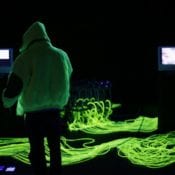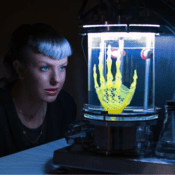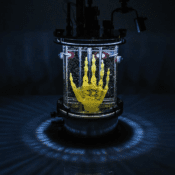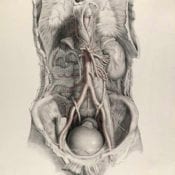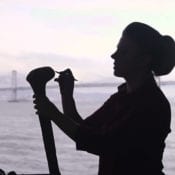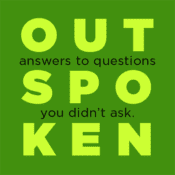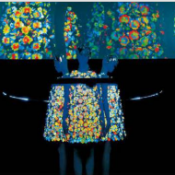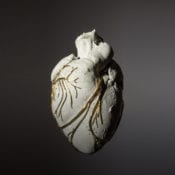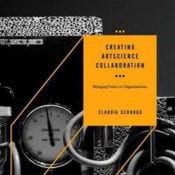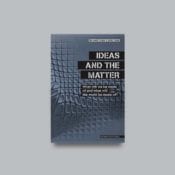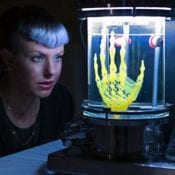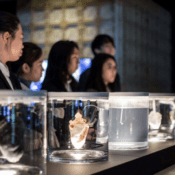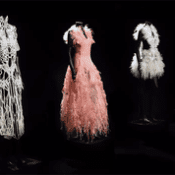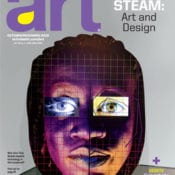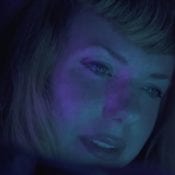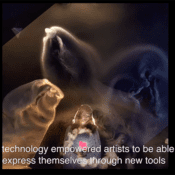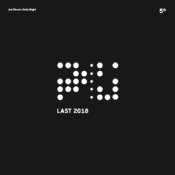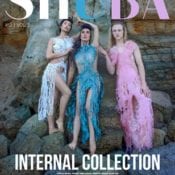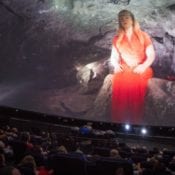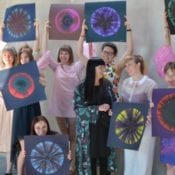PUBLICATIONS & PRESS
AI, Art, and Creativity: Exploring the Artist’s Perspective
Amy Karle, a leading artist at the intersection of AI and generative design, has been pioneering the use of AI in creative processes since 2015. She believes AI complements human intuition and creativity, unlocking new realms of artistic possibilities. Amy’s work demonstrates how human imagination, when combined with AI’s capabilities, can redefine art and creativity in the digital age.
The Charter for AI Ethics
To support significant emerging ethical AI frameworks, including UNESCO’s Recommendation on the Ethics of Artificial Intelligence, the EU AI act, the United Nations resolution on the promotion of “safe, secure, and trustworthy” artificial intelligence (AI) systems, and the US Blueprint for an AI Bill of Rights, this carter leverages insights gained at Salzburg Global Seminar, to add to these foundational frameworks, underscoring the importance of ethical principles tailored to the current and future possible risks of AI, in relation to various intelligences, creative and cultural ecosystems and beyond, to better safeguard against potential harms, promote transparency, and ensure that AI…
AI-Assisted Biodesign
Issues in Science and Technology (winter issue) by the National Academy of Sciences and Arizona State University features Karle’s AI-assisted biodesign work. Acutely aware of the volume of questions and concerns AI poses, Karle chooses to use AI in her research and work to illuminate that it can be used to support and co-create preferable futures. “The future with AI does not have to be something that happens to us, it is something that we can co-create.” – Amy Karle
Ideal Indoor Living: Optimal Health for Humans, Buildings, and Planet
The growing focus on creating healthier, more energy-efficient buildings is reshaping how we design and inhabit spaces. By improving air quality, insulating against pollutants and pests, and optimizing energy consumption, these methods not only reduce utility costs but also enhance living conditions. Experts like Amy Karle highlight how artificial intelligence and nature’s intelligence can be integrated to design sustainable environments that promote health and well-being for both people and the planet. As cities like New York implement laws to cut emissions, Passive House Standards represent a future of smarter, healthier buildings for all.
Wired Podcast SIAF AS A TOOL #3 with Guest Amy Karle (Future Theater Participating Artist)
WIRED Japan interviews artist Amy Karle in this podcast. Their discussion focuses on the impacts of technology and biotechnology on health, humanity, society, and the future, and her installation Echoes from the Valley of Existence at the Sapporo International Art Festival (SIAF Triennial) which explores the ephemeral nature of human existence in a future where digital and biological technologies enable life beyond physical death, provoking questions about the legacy and interpretation of human existence by future generations or extraterrestrial beings. (In Japanese and English).
This Futurist Wants To Send Your DNA To The Moon
In her interactive art installation Echoes From the Valley of Existence, Amy Karle collects and sends Digital and DNA samples to the moon. This project, merging biotechnology with artistic expression, invites reflection on the legacy of humanity’s biological and digital remnants, provoking contemplation on how future beings might interpret the echoes of our current existence. “…the installation’s more about provoking questions than providing answers. Questions about how the biological and digital remnants we leave behind “echo” ahead in time, for example, and how future societies could interpret these relics.”
An AI Society
This article discusses the broader implications of generative AI on society, including its potential to homogenize cultural narratives and copyright laws, alongside Amy Karle’s innovative use of AI in biodesign to address environmental challenges, particularly in projects that guide the growth of mycelium-based materials and speculative biomimetic corals for environmental sustainability and carbon dioxide mitigation, reflecting a nuanced view of AI’s role in shaping future societal and environmental outcomes.
Bio Artists Face an Uncertain Future
‘American bio artist Amy Karle… primarily works in the computer technology sub-genre of bio art… and examines how technology and biotechnology impact the human body. In recent artworks from the 2010s, she made a 3D-printed heart form that pulses biomechanical, …and a scaffold in the shape of a human hand seeded with donated human cells … At the heart of these works by Karle, Catts, Zurr, and Anker is a perceptual license to explore the philosophical and spiritual aspects of the life sciences that traditional biologists, neurosurgeons, or chemists are not typically granted.’
ArtScience is Blooming
The article discusses the burgeoning support for ArtScience collaborations, highlighting Amy Karle’s innovative work at the intersection of art, science, and technology, and her significant impact on the field as a pioneering bioartist and futurist. Karle’s projects, emphasizing the fusion of digital, physical, and biological systems, exemplify the transformative potential of integrating artistic and scientific methodologies to envision and shape future human advancements.
Amy Karle: Where Will Biotechnology Take Us?
When she was born, Amy Karle had a rare and potentially fatal condition. This experience fueled her desire to explore biomedical technologies as an artist. Her works trigger a profound reflection on the human condition, the body and its limitations, integrating medicine, design, philosophy, art and biotechnology. This article traces the artist’s profile, describing some of her most interesting works.
Amy Karle: The Fusion of Technology, Humanity and Evolution
“Through her art, Amy delves into this brave new world, where tech, biology, and the essence of life meet. Picture a world where our digital and physical selves blend harmoniously into one. That’s where Amy’s art takes us. Her mission? To use the endless possibilities of technology to make our lives better, healthier, and in harmony with our planet”…
Ethics & Human Research Vol 45, Issue 5 | Amy Karle: Art as Inquiry: Techno-enmeshment of the Human Body
E&HR delves into the ethical, regulatory, and policy dialogues surrounding human-centered research, fostering critical analysis on related scientific and healthcare issues. Artist Amy Karle’s...
A Short Walk Through the Uncanny Valley of A.I. Art
Amy Karle is a multi-faceted artist … Her view that technology will transform a post natural world has an undercurrent of sci-fi secular spiritualism reminding me of themes found in novels of Doris...
Merging Ethics, AI, and Art in a New Vision of Humanity
In this interview Amy Karle discusses her work and relationship with AI, emphasizing that technology, can be used to enhance human abilities and quality of life if we use it that way, underscoring...
Amy Karle: Exploring how Technology is Changing Humanity
Itunes “Groundbreaking artist and visionary futurist Amy Karle specializes in the transformative impact of emerging technologies on humanity, including AI and biotech. Her work examines how...
Robot Couture: Is Tech Fashion Having a Moment?
“Fashion tech designers are leading the charge… combining science, tech, and art to bring new and exciting possibilities to the industry, and help shape the vision of the future. From the unforgettable, super iconic moment when Alexander McQueen brought robot arms in fashion-making to the stage, to Iris Van Herpen, who combines cutting-edge tech and precise craftsmanship to produce delicately unique feminine clothing, to ultra-contemporary artist Amy Karle’s hybrid artworks and garments that offer a glimpse into the future possibilities of technology in fashion and who we could become when our bodies merge with technology, these designers and artists are…
ART + TECHNOLOGY Episode 10 – Part 2 What Makes One NFT Worth More Than Another? (video)
“In Part 2, artist Amy Karle speaks to Christiana Ine-Kimba Boyle, an NFT curator and senior director at Pace Gallery. Their excitement for Web 3.0 is infectious, and Gemma learns how blockchain is opening doors for more diverse, emerging artists.”
ART + TECHNOLOGY Episode 10 – Part 1 Could NFT Artwork Really Last Forever? (video)
“Is blockchain the new afterlife? … Amy Karle returns to Art+Technology to talk about her pivot toward the metaverse. Amy shares how she was able to “transcend the physical into the decentralized digital” in her new skull-inspired collection. Host Gemma Cairney gets a crash course on NFTs and learns about new opportunities for artists in the era of blockchain.”
Amy Karle Talking Art Process (video)
Novus lab interviews Artist Amy Karle on her art making process and practice.
Interview With Artist Amy Karle (podcast)
Spotify | iTunes | Google “We are joined by ultra-contemporary artist Amy Karle. Heralded as BBC’s 100 most inspiring & influential women, Amy discusses her journey into web3. She is known for her exhibits worldwide and the impact they play in our technology based world. In this 1:1 interview, Amy questions technology’s impact on humanity and the future impact blockchain may have on our everyday lives. Her web 3 presence is growing and she discusses her excitement to build, as she begins her NFT art journey.”
Wikipedia | BioArt
“BioArt is an art practice where artists work with biology, live tissues, bacteria, living organisms, and life processes. Using scientific processes and practices such as biology and life science practices, microscopy, and biotechnology (including technologies such as genetic engineering, tissue culture, and cloning) the artworks are produced in laboratories, galleries, or artists’ studios. The scope of BioArt is a range considered by some artists to be strictly limited to “living forms”, while other artists include art that uses the imagery of contemporary medicine and biological research, or require that it address a controversy or blind spot posed by the very…
Project 1138 Ep II: Clones (podcast)
A British curator thought it would be a good idea to turn his Art Wars exhibition of artist embellished Stormtrooper helmets into 1138 NFTs. It wasn’t. In this episode, the hosts delve into the replication of artwork in the ArtWars NFT collection and covers topics such as A.I generated art and cloning techniques, featuring guests Artist Amy Karle, Multi-Media Strategist Lechon Kirb, and Star Wars artist, effects designer and animator Mark Anthony Austin.
Unknown Unknowns: The Milan Triennale
“Amy Karle grew bone on a bioprinted scaffold in the shape of a human hand. Made of biodegradable hydrogel, the scaffold eventually disintegrates allowing the human Mesenchymal stem cells (hMSCs from an adult donor) seeded onto the design to grow tissue and mineralise into bone… In the perspective the Milan exhibition, the work suggests a future when we will be able to use 3D printing to “fix” the first humans on Mars. It also investigates who we could become if we exploit the full potential of biotechnologies.”
Atlas of Data Bodies 1: Body images in art, design and science in the age of digital media
“What fascinates Karle, especially with regards to the human body, is the contradictory potential of technology… In art, it is possible to negotiate inescapable questions as well as utopian and dystopian future scenarios. But how does the convergence, mixing and reconfiguration of organic and artificial bodies affect our definition of what it means to be human? In relation to the significance of illness, healing, and technology within her biography, Karle exposes philosophical lines and nodes around the human body and its fragility. Her works are hybrids that embrace artistic as well as scientific methodologies. As such, she can be described…
Artist Amy Karle’s Inaugural Exhibition in the Metaverse
“Karle has shown in museums worldwide including The Smithsonian, The Mori Museum, Ars Electronica, and the Centre Pompidou, and is now exhibiting this NFT art collection for her first exhibition in the metaverse! OnCyber Wake Gallery can be viewed March 7-21, 2022… The digital artworks in The Skull Collection explore the meaning of mortality and question the implications of technology on humanity that remains in the digital domain. The artworks are contemplations of how we can transcend the physical into the digital after we die.”
Introducing the (A) in STEM Processes
This publication presents a collection of global arts and science cases, including work by Amy Karle, categorized into three phases – Insight, Process, and Output – to understand the existing collision between the fields, aiming to inspire teachers, artists, and scientists to appreciate the advancements in science and art, and use them to create meaningful visions for the future. Karle’s work “encourages envisioning both medical and artistic futuring, fostering innovation and education. This may serve as a foundation for further exploration and research opening conversation about transhumanism, synthetic biology, the future of medicine and implants and speculative design.” ISBN:978-952-344-432-4
Amy Karle Stepped Into The NFT Space, and The Traditional Art-World Goes Maniac
Artist Amy Karle ventures into the NFT domain with her highly-anticipated ‘Skull Collection,’ melding bio-art with blockchain and redefining digital legacies. This series delves into the legacy of our digital remains after death and paves the way for Karle’s expansive future endeavors in the metaverse, from couture to crypto/physical art explorations.
An Artist’s Ghost: Embodiment, Exponential Technology, and Afterlife artist talk by Amy Karle (video)
What does it mean to be alive at this time of merging with technology? In this subnetTALK, Artist Amy Karle will lead a discussion around her work, illuminating how she leverages the body as a medium + exponential technologies (including biotech, 3D printing, AI, Neutral Networking, Blockchain, BCIs) as tools for generating possibilities; engaging in new ways of expressing and communicating; to create hybridized forms of art about the future in a post-natural world; and to reveal larger, more fundamental questions of the impacts on ourselves and our future.
Bioart With Amy Karle: How 3D Printing Connects Art, Science, Humanity
“In this episode, I had the pleasure to interview bioartist Amy Karle. We were able to have an in-depth conversation surrounding not only Amy Karle’s major artworks using 3D printing and Bioprinting, but also her personal journey as a bioartist and the meanings behind her artworks. Some of the questions we explored include: What does bioprinted organ replace imply for humanity and our identities? Who has the right to live and access technology that can prolong life? Who will have access to bioprinted or 3D printed medical devices first? What is the role of an artist in terms of aesthetics?…
Exploring Bio-Based Materials as a Method to Create Eco-Friendly, Sustainable Art Installations
This research thesis examines the use of biobased materials as a solution for reducing material waste in creative practices, with a focus on organic materials produced from living matter, such as bio leather made from bacterial cellulose grown from Kombucha. The study adopts a practice-based approach to experimentation, exploring the manipulation of the biobased material in pre- and post-growing stages to achieve various material properties, resulting in the creation of eco-friendly and sustainable art installations. It includes the work of Amy Karle, Neri Oxman, Suzanne Lee, and Dutch Design Week.
The Path of The Modern Muses: Read Real Life Advice From The Women Who Made It (book)
If a girl can envision it, she can be it. This book interviews and portrays the life and career of inspirational women from various fields around the world, including Artist Amy Karle, featuring interviews with activists, actresses, athletes, businesswomen, pilots, philanthropists, fashion designers, film directors, architects, lawyers, sportswomen, dancers, perfumers, etc. ISBN: 979-8747113657
TIPE Women in 3D Printing Podcast Series (video)
In this dynamic and wide-ranging interview, Women in 3D Printing interviews Amy Karle. Topics include Karle’s background and why she got into 3D printing, medical futuring / bioprinting replacement parts / bioethics, and how art and exponential technology can be used for the best and highest good of humanity, ecology, evolution and the planet.
Wikipedia | Amy Karle
“Amy Karle (born 1980) is an American artist, bioartist and futurist. She creates work that looks forward to a future where technology can support and enhance the human condition. She was named in BBC’s 100 women, as one of the 100 inspiring and influential women from around the world for 2019. Her work questions what it means to be human, with an emphasis on exploring the relationship between technology and humanity; particularly how technology and biotechnology impacts health, humanity, evolution and the future. She combines science and technology with art and is known for using live tissue in her works.…
#56 March Issue: Regeneration
This issue will explore different forms, ideas and understanding of birthing,rebirthing and new beginnings through cinema.
Artfacts: Amy Karle
Amy Karle is an Ultra-Contemporary artist. Amy Karle is mostly exhibited in Japan andFrance. The most important show was The Factory of Life – La Fabrique du vivant at Centre Pompidou in Paris in 2019. Other important shows were at Mori Art Museum in Tokyo and Ars Electronica Center in Linz. Amy Karle has been exhibited with The Tissue Culture & Art Project, EcoLogic Studio, Mark Stelarc, Mehmet “Memo” Akten.
A Mirror of Flesh: An Exploration of Materiality in Living Bioengineered Art
“Karle’s work has engaged in both conceptual and material bioart, including drawings, performance, sound and 3D bioprinting in her practice… The work is pioneering from both an artistic perspective as well as within biotechnological practices … demonstrating an exploratory element of bioart practices in the new uses of existing technologies, as well as innovative ideas requiring new or alternative techniques or materials to be produced… Her interest in biological materials is motivated by a wider interest in the future of technologies and their potential impacts.”
ideaXme | Amy Karle Interview: exponential technology and ethics series
The first interview in ideaXme’s exponential technology and ethics series is with Artist Amy Karle, BioArtist and Futurist. Amy shares with us her views on the interface between exponential technology and ethics… Amy is exploring the possibility of creating replacement parts for diseased organs. Amy talks of her award winning work and discusses the critical role ethics must play in the development of exponential technologies.
Awareness in Physical and Mental Changes in the Bioart of Roy Ascott
“Stellarc, Edward Kac, Orlando, Amy Karle, Anna Dimitriu, Marta de Menezes, Suzanne Anker, Laura Splan and George Gessert are some of the main authors of bioart.”
Regenerating the human body with art: Amy Karle’s bio-artistic proposal
“Amy Karle is an American bioartist who has ventured into 3D sculpture, performance and even fashion with designs made in the likeness of veins, arteries and internal organs of the human being.”
TIPE 3D Conference | Pushing the Limits of Additive Manufacturing in Healthcare (Video)
As part of the “first ever all female speaker 3D printing conference”, industry leaders Amy Karle, Chengxi Wang, Jenny Chen and Laura Kastenmayer discuss “Pushing the Limits of Additive Manufacturing in Healthcare” including: creativity and innovation; accessibility, education, collaboration; digital & additive manufacturing to support ending the covid-19 pandemic; how panelists would ultimately push AM in healthcare if the sky’s the limit
3D Print Ourselves : 3D Printing could change what it means to be human (video)
Satori CEO Chengxi Wang and BioArtist Amy Karle discuss how 3D printing is affecting biotech, and how this affects what is might mean to be human. Amy Karle also shares how accessible 3D printing is becoming as we discuss the importance of a variety of perspectives in the 3D printing industry.
Religion and the Digital Arts (Book)
“With degrees in Philosophy and Art and Design, Amy Karle’s work explores the deep questions at the intersection of the human experience and technology: What happens when technology surpasses humanity? Can we use technology to indefinitely prolong life? How does technology enable life after death? How might we use technology to redesign the human body?” ISBN:9789004447592, 9004447598
ARTIST + SCIENTIST: Future visions (Video)
How can art support science? And how can science support art? Follow the discussion between award-winning Artist Amy Karle and Erasmus MC’s research team Roberto Narcisi, Enrique Andres Sastre and Yannick Nossin who believe these two fields go hand in hand with each other. In the end, aren’t art and science seeking for the same answers? How will science and all its data look like in the future? And what essential role can art take in this?
Online Artist Talks (Video)
Get to know the artists of (UN)REAL! Who are they? What kind of art do they make, and what is their (UN)REAL artwork about? In this video you will get to know each artists that have participated in (UN)REAL exhibition at Science Gallery Rotterdam including Amy Karle who created Morphologies of Resurrection.
Case study: Digital Twin projects launched at Ars Electronica .ART Global Gallery
Earlier in the year, Ars Electronica partnered with. art Domains to launch an online exhibition space for the festival’s inaugural 2020 online edition. The .art Domains offered the participants also to take advantage of one of their new online solution called the .art Digital Twin.
Journal of Curriculum and Pedagogy | WTF? Feminist pedagogy and 3D printing in a preservice virtual field experience
Bio-artist Amy Karle (2020) brings feminist critical reflexivity into her works in which she integrates art, science, and technology toward goals of healing and improving bodily functions.
Quarantime! | Episode 44: What is Reality? An Exclusive Quarantime Investigation(video)
More than ever people are asking, what’s real? How did this ever become an urgent question for our daily lives, a matter of ever greater disagreement and discord? “Are We As Gods? Bio Reality with Amy Karle” begins ~35:30 Amy Karle is an internationally award-winning bioartist working at the nexus of where digital, physical and biological systems merge. Her art and enquiry explores ethical questions about our god like power to author in biological and genetic media, and ultimately asks how we might create a positive better future and not a dystopian one.
Cyberpunks | Bioartist Amy Karle Delivers New Hope in Regenerative Reliquary
For many artists, the expression of the human condition comes through pain. Emotional, psychological toiling expelled into the world. Perhaps no one’s artistic trauma manifests more materially than the work of Amy Karle. Amy grew up with a rare and dangerous genetic disorder known as aplasia cutis, the missing of skin on the scalp. From such beginnings, Karle pioneered a new form of artistic expression: Bioart…It’s a style of art just past the threshold of science–experimentation for the sake of creativity in lieu of medicinal remedy.
DIALING IN: AMY KARLE AND ROBERTO NARCISI (UN)REAL: Artist and Scientist in Dialogue (Video)
What does it mean to be alive at this time of evolution and technology merging? And how can art and science merge into a common goal? Artist Amy Karle and scientist Roberto Narcisi explain.
Ars Electronica X .art Domains – The Digital Launch You Don’t Want to Miss
Artist Amy Karle comments, “I use technology as a mirror to the self, to who we are and to who we can become. My work questions and maps the new world of humans merging with technology, and what could be done to shape a more positive future. My Digital Twins that are featured in the Ars Electronica. ART Gallery … examine material and spiritual aspects of life, opening visions of how technology could be utilized to support and enhance humanity. The projects probe how exponential technology and interventions could heal and enhance the body – and even alter the course of evolution.”
An (UN)REAL Introduction (Video)
Introduction to the (UN)REAL exhibition at Science Gallery Rotterdam exhibiting Amy Karle’s artwork, Morphologies of Resurrection, 2020. (translated)
The University of British Columbia | AI, Robotics, Smart Cities, Architecture and the Arts How Humanity Will Live Tomorrow
Amy Karle has crafted an extraordinary line… The materials mimic the pulmonary system, blood vessels, ligaments and tendons or the nervous system literally turning the wearer’s battle for life inside out. …Bioengineering, genetic engineering and other forms of biotechnology were explored as solutions to treat incurable diseases and even improve all types of performance… bio artworks included The Heart of Evolution (2019), a higher performance human heart created by Amy Karle – exploring to what degree humans should change their bodies.
Biopolitics In Future And The Arts: Ai, Robotic, Cities, Life – How Humanity Will Live Tomorrow
Internal Collection, 2016-2017 series of fashion designs by Amy Karle, that imitate human body features such as ligaments and tendons, pulmonary and nervous system… The intention to imitate bodily organs is quite innovative and a striking artistic intention, these ‘organic’ designs connote sexuality and desire… Until present day, nudity has always been a political taboo, in most cultures it is prohibited. Such artistic intention suggests that sex has been used as a political tool for control… This biopolitical enigma questions our notions of dress code, where sex in general has been something secretive, difficult to reach and in order to…
(UN)REAL exhibition Catalog (book)
What is real, and how are you sure it is so? Can you be confident in your perceptions when so many experiences are digital or influenced by the changing chemistry and architecture of your brain? (UN)REAL, the inaugural exhibition of Science Gallery Rotterdam at Erasmus MC, presents art projects that respond to this fertile terrain between the actual and the perceived. Includes Amy Karles artwork… These works can serve as bridges of understanding and platforms for debate, but perhaps even more important, they are welcome signs, announcing a new meeting place for research, society, art, and healthcare.
Amy Karle uses 3D Printing in Thought-Provoking Futurist Art
HP is spotlighting its ongoing partnership with innovative artist Amy Karle, who produces avant-garde art pieces, exploring connections between technology, humanity, and artistic expression, and has...
The Lowry | World Class Digital Art
Digital Art is a fascinating area of creativity that sees artists using technology to create the very latest in art practice. From performance to the visual arts, in the UK and internationally there are beautiful and powerful imaginings being created for theatres, galleries, public spaces, online and unique locations… American artist Amy Karle was part of our 2019-2020 exhibition THE STATE OF US… listening to her thought process and methods reveals just how far artists have come in harnessing and experimenting with technology advances as they create new ideas.
Design Milk | Amy Karle Unlocks The Potential Of Humanity’s Future
Amy Karle created a series of artworks, each intended to imagine novel forms based upon extinct species to explore “hypothetical evolutions through technological regeneration.” … the collection evokes the golden era of natural history museums (and perhaps the age of cabinets of curiosities), “specimens and relics” investigating the relationship between structures that once served creatures of eons past for the purpose of finding application for future forms using their framework of stability, flexibility, and strength.
Artificial Intelligence: The Political Challenges of Enhancing Human Capacities
In this book, Virginie Tournay examines the political implications of artificial intelligence in enhancing human capacities. Amy Karle is mentioned as an artist whose work is rooted at the intersection of technology and the human experience. Karle’s art serves as an example of how AI technologies are used to expand human abilities and open up new perspectives on the future of humanity. Tournay emphasizes the need for a critical and informed culture surrounding algorithms to navigate the challenges of the digital era. (translated)
The artist’s book as a multimedia encyclopedia: Visual interfaces in book projects from art and science
Marlene Bart’s book explores the relationship between artist books and encyclopedias, using natural history as a unifying theme. Amy Karle’s groundbreaking work is featured as a key example of merging technology, art, and natural history. Karle’s integration of digital, biological, and physical systems pushes the boundaries of knowledge dissemination and virtual reality. The book emphasizes how her transdisciplinary approach to collecting and organizing data challenges traditional organizational systems and offers new possibilities for virtual development and knowledge in the digital age. (translated)
Velas Magazine | 10 of the most inspirational women in the world
There are many women who have positively impacted their environment throughout history, most of which have been through social, economic, humanitarian, scientific, artistic, legal, and technological achievements. Today we dedicate this list to 10 women who are inspiring their communities and the world… Born with a health disorder that caused the absence of skin, Amy Karle was soon convinced of the capabilities of the human body when exposed to the right technological conditions. She is an award-winning bioartist, who designed a human hand with 3D-printed scaffolds and stem cells. “Biotechnology can lead us to a very promising future or irreversible demise. It…
HP Collaborates With Amy Karle, Leading 3D Printing Artist And Futurist
Amy Karle’s mission is to positively impact others, raise consciousness and contribute to social, political, and technical development by making and sharing her work. As an artist and designer, Karle uses HP Multi Jet Fusion technologies which include the Jet Fusion 5200 and 580 printing systems to build her pieces, creating art that catalytically examines material and spiritual aspects of life and opens minds to future visions of how technology could be utilized to unlock human potential.
HP | HP Collaborates With Amy Karle, Leading 3D Printing Artist And Futurist
“I love the exploration and development that 3D printing offers: a new opportunity for thinking, a new way to reshape what we create, and a completely new approach to expression in which digital, physical and biological systems are interwoven,” said Amy Karle.
BBC 100 Women | The Woman Creating Art with Human Stem Cells
“Amy Karle is a bioartist. She combines art, science, and technology, using live tissue to create her work. For her latest project she has 3D-printed a beating heart; her next step is to make a version that uses human stem cells. In making her art, she helps develop new understanding and techniques, that could be used by researchers in the future.
Smithsonian | Open Access Remix
Artist Amy Karle created nine sculptures in two series examining the possibilities of reconstructive technologies and the potential and the pitfalls of future evolution that come with technological advancements. The sculptures are based on the 66-million-year-old Triceratops at the Smithsonian’s National Museum of Natural History, which made history as the first “digital dinosaur”—the first 3D scan of an entire dinosaur skeleton executed by the Smithsonian’s Digitization Program Office.
Smithsonian | 21st-Century Diffusion with Smithsonian Open Access
It was important to inspire both our own staff and people worldwide with some early examples of what Smithsonian Open Access will stimulate. These early collaborators included artists, innovators, educators, technologists, and more and their projects inspire delight… Artist Amy Karle created a sculpture series examining the possibilities of reconstructive technologies and the potential and the pitfalls of technology—enabled using a 66-million-year-old Triceratops from the Smithsonian’s National Museum of Natural History.
Smithsonian Releases 2.8 Million Images Into Public Domain
Artist Amy Karle unveils a series of sculptures of the National Museum of Natural History’s 66-million-year-old triceratops, Hatcher… The Smithsonian invited artists, educators and researchers for a sneak peak into the archives, and will be featuring some of their creations… Among them is a series of sculptures crafted by artist Amy Karle, depicting the National Museum of Natural History’s 66-million-year-old triceratops, Hatcher. Karle, who specializes in 3-D artworks that highlight body form and function, was keen on bringing the fossil to life in an era where modern technology has made de-extinctions of ancient species a tantalizing possibility. Six of her nine 3-D…
Future Humanity – Artist’s Perspective
What is life in the Biotech era, in this era where we can enhance ourselves as humans? Use biotech and our digital techniologies to become really anyone that we can imagine. The future of humanity rests in the ddecisions we make of. how we use our science and technology and how we design what we want our future humanity to be.
IMPACT magazine | Unlocking the Smithsonian
Digital versions make the real thing more valuable, not less and we are in. the early stages of translating the power of context to the man audiences that visit the Smithsonian… Artist Amy Karle reimagined the Hatcher Triceratops fossil, the first digital dinosaur, in gold.
Harper’s BAZAAR Jan/Feb 2020 Issue
This issue of Harper’s BAZAAR features the groundbreaking work of Amy Karle, emphasizing her forward-thinking approach as an artist who explores the synergy between humanity and technology. Karle’s work highlights how technology can transform the human experience, inviting viewers to contemplate these changes. (translated)
Design with Life: Biotech Architecture and Resilient Cities (Book)
“We can look to the biotech architecture of the body for models of how to build a resilient city. When the biotech architecture of the body functions properly, it is in physical and mental health and well-being, exceptionally resilient and highly adaptive, the picture of ultimate vitality. The intelligence and design of the body and its’ functions, systems and interrelationships – down to the smallest components of cells and DNA – reveal the complex interworking of a profoundly intelligent system designed with multiple highly organized systems including infrastructure, prioritization, electricity, communication, fuel, recycling and waste management, short and long term…
BBC News The Cultural Frontline | Inside and out: Digital experiences of the body(Audio)
What happens when digital technology and our bodies start to merge? Zoë Comyns meet artists who are growing body parts with human cells, implanting technology into their bodies and questioning whether we can have meaningful relationships with sex robots. She will also meet an artist who exists only in the digital realm… Amy Karle has been named one of the most influential women in 3D printing. Born with a rare skin condition, she grew up fascinated by technology and how it can be used to heal and enhance our bodies. As a bioartist, her work includes a human hand design…
Mori Art Museum | Future and the Arts Exhibition Catalogue (book)
Includes text about Amy Karle’s 5 artworks in the exhibition Future and the Arts: AI, Robotics, Cities, Life – How Humanity Will Live Tomorrow (translated)
Creating the Future
Amy Karle’s The Internal Collection is a lineup of garments inspired by the internal tissues of the human nervous system, the lungs, and the ligaments. Karle uses advanced technologies including 3D body scans, CAD, and laser-cut patterns, combining them with artisanal hand-sewing to create these fashion pieces that take the form of “wearable internal organs.”
Stir World | The future through art at Mori Art Museum, Tokyo
Mori Art Museum presents Future and the Arts: AI, Robotics, Cities, Life – How Humanity Will Live Tomorrow, a display of art, design and architecture projects that take a leap ahead… The showcase also features artist and designer Amy Karle and her series Internal Collection, a series of 3D printed garments inspired by biological systems in humans – muscular, nervous, cardiovascular etc.
Digital Creativity | A room with a private view
An inspirational encounter… The welcome address is given by artist, Amy Karle. In September 2019 Karle was announced in the BBC 100 Women which showcases the stories of inspirational women to a global audience. There is no question that I find Amy inspiring. She talks of her work with passion and personal experience of her mother’s cancer, which influences a lot of her thinking. This resonates with me. My own family experiences of cancer and how it does not discriminate in tearing through everything; regardless of age and gender. For me, the piece that Amy is exhibiting here; “Regenerative Reliquary”…
About Manchester | Grotesque and beautiful body modifications go under the spotlight at The Lowry
An exhibition that explores extreme body modifications – from the grotesque to the beautiful – opens at The Lowry The State of Us features a collection of work by ten international artists and will run until Sunday, 23 February (2020). The exhibition will question if technological intervention has out-paced natural order and examine if humans are engineering evolution. The artists that feature have experimented with the body and technology to transform, manipulate, reinvent or reshape how we see and understand ourselves. Among the items on display, artwork by Amy Karle
BBC | BBC 100 Women | Amy Karle Talk: “The Future Human: Who Will We Become Under the Influence of Technology?” (Video)
Working at the cutting edge of art, technology, identity and humanity, Bioartist Amy Karle explores what it means to be human at this time of humans and technology merging. Her work questions and illuminates how we can use our exponential technology to heal and empower us, and considers pitfalls, dangers, opportunities and strategies. Her passionate search working through technology and medical futuring manifests in emotionally captivating artworks that trigger the imagination and also advance science and technology in the process. Amy Karle’s work broadens the possibilities of healing and enhancing the body and raises poignant questions of who we can…
Death and the Female body: Representations of Death in its relationship with Fashion and Femininity
Amy Karle’s work… might have repercussions on next generation’s artists interested in engaging with the theme of death and human body. Her creations completely embody the concept of body becoming the dress and dress becoming the body, bringing it to a whole other level of reality. Karle’s Internal Collection (2016/2017) is presented more as an art collection than a fashion creation. The idea has routes in the designer’s biology and biotechnology formation and subverts conventions on body and beauty… Every part of her projects deals with physical death and the eternal dilemma about defeating it, talking about healing and enhancing,…
Bioart, an ethics of transgression?
Born in the 1990s, bioart raises many ethical questions. Sometimes suspected of collusion with biotech industries, it calls into question the contemporary uses of biotechnologies, and could even participate in a reconfiguration of the borders between species.
3D Bioprinting: Chiasm of Art, Design, Science, Technology, and Evolution
Bioprinting is among the most cross-disciplinary fields of science and technology today, requiring knowledge of materials science, manufacturing, and biology. Furthermore, as Amy discusses in this article, we are still in the early days of exploring the transformative potential of 3D bioprinting a technology that may not only be revolutionary but also evolutionary. “The overall process requires research, investigation, stimulating imagination, envisioning creative approaches, designing a study / designing a product, and executing it with attention to detail and outcomes… A bioprinter is simply a tool, but it is also the potential of the questions, designs, and meaning behind those questions and designs…
6 Mind Blowing New-Media Artworks
The mix between new media and technology is the future of art, and the future is now. We selected 6 amazing examples of New-media art including by Artist Amy Karle”
These artists and performers are biohacking in incredible ways
From mind-reading prosthetics to a super-human drumming arm, meet the mavericks blurring the lines of art and science through their work. “Do I see a future where we can grow our own body parts and organs? Yes, I can envision that future, but it brings up a lot of ethical and moral issues,” warns Karle. “This is where bigger exploration comes into play and we really have to consult a lot of different fields – philosophers, ethicists and policy makers – [before we go ahead], not just have the ability to do it scientifically. We have to think about our…
BIOTECH + ART
Although Amy Karle’s project, Regenerative Reliquary, pushes the boundaries of modern stem cell research, it also raises some crucial ethical and philosophical questions about the use of stem cells. Is it acceptable to swap our organs with designer organs? Should we be required to have regular organ replacements to elongate our lives? Should we be allowed to have more than four limbs?
MEDICINE + TECHNOLOGY + ART
Aside from artificial enhancements to the body, 21st century developments into stem cells have also led some artists to create use organic material in their work. Amy Karle is a bio-artist who has dedicated much of her work to using medical technology to enhance the human body. In her Regenerative Reliquary project, she 3-D prints the design of a hand using stem cells that grow into bone cells. In doing so, she raises some very important questions regarding growing human material outside of a human and the possibility of enhancing the human body organically and not just artificially… From this,…
Culture Prime | Centre Pompidou | Amy Karle (video)
“From a young age, I was really cognizant of life and death and this fine balance between what it means to be alive, and this is both biological and medical, butt there is also this whole other...
Outspoken | Host Justin White | Ep. 47 – Amy Karle(podcast)
“no matter what tools or complexity goes into [making the artwork]… the art has to be able to capture someone’s emotions when they look at it… so whatever happens in the process – if advancements are made or not – if the science and technology can be used or not – it still functions to inspire this hope and this thinking of enhancing humanity for the better.” – Amy Karle
Richesse No.27 _1
This issue of Richesse focuses on the rapid development in Asia, particularly highlighting the ultra-wealthy in Singapore and Macau. It also features the work of Amy Karle, an artist known for merging art and technology. Karle’s work is spotlighted for its forward-thinking approach, exploring the synergy between humanity and technology and offering innovative perspectives through her art. (translated)
Future Humanity Our Shared Planet
With “Future Humanity – Our Shared Planet” Hyundai Motor Group, Central Academy of Fine Arts Beijing and Ars Electronica present their first joint exhibition project. The focus is on the social and cultural dimension of technological progress. It deals with the future relations between humans and machines, the interactions between culture and technology as well as the tension between tradition and spirituality and the ever-increasing mechanization and rationalization of our world. (translated)
Creating ArtScience Collaboration: Bringing Value to Organizations(book)
“Art is about visions, about future ideas, and poses possibilities… The outcomes of artsciecne collaboration… can be envisioning futures or questioning ideas, or making completely new statements… Amy Karle explores the meaning of being human and the human condition. She is specifically interested in the ways humans and technology are merging and how to use InfoTech and biotech to empower humanity and society… the artwork represents an artist’s future vision but does not give immediate answers. It asks questions and encourages next steps in scientific development…”
Ideas and the Matter: What will we be made of and what will the world be made of? (Book)
Sciences and technologies are extending design fields, modifying materials and everything that surround us, even our body, redefining on a perceptive level the boundary between things and us. The contributors to the book come from many and diverse disciplines (medicine, biotechnology, engineering, art, anthropology, architecture and design), by which design thoughts are fed… A strong example is the Regenerative reliquary (2016) by media artist Amy Karle. She grows bone along a biofriendly 3D printed lattice using medical CAD and human stem cells, using 3D scan data of bones from the California Academy of Science’s collection and then rendering the data…
Future Humanity. A Cross-continental reflection on man and technology
Exploring the future of humanity in a tech-centric world, the exhibition ‘Future Humanity – Our Shared Planet’ delves into the evolving relationship between man, machine, culture,...
Hyundai and the art of the relationship between man and machine
Hyundai announces the opening of an art exhibition at its three Motorstudio centers as a tribute to technological development and the relationship between humans and machines.
Memories externalized by technology: how to create a bodily experience
This paper presents a theoretical-practical investigation on the importance and use of technology in the storage, evocation and transmission of memories, and how externalized memories can relate again with technology and the body, transforming itself into a form of existence. A historical study is carried out on memory and its relationship with technology, and a survey to understand memory today. In addition, digital aesthetics are explored, bringing examples of works that work with memory, body and technology. From the definition of these concepts, we seek to understand the interaction between memories external to the human body and the use of…
Art of the Future
For hundreds of years, artists relied on paint and canvas, clay, or stone to express their ideas. Today, contemporary artists incorporate science, technology, engineering, and math into their work. Amy Karle uses her knowledge of human anatomy, technology and textiles to create her new media works, including Breathe… How is Karle’s process similar to Leonardo da Vinci’s? How is it different?
ART+TECHNOLOGY episode 7 “Can 3D Art Become Human” (video)
“In the seventh episode of our captivating series, ART + TECHNOLOGY, we explore the world of bioart with Amy Karle. This innovative American artist uses 3D art to discover what it means to be human, expressing internal experiences in visual forms. Questioning whether or not 3D art can become human, Amy puts forward a new renaissance in which humans can become whatever they wish to be, as technology empowers expression through new tools, and the requirements of art serve to push the technology. Join us as Amy creates 3D representations of our internal selves, so that we may study the…
Bloomberg News | ART+TECHNOLOGY episode 7 “Can 3D Art Become Human”
The technology empowered artist to be able to express themselves through new tools
L.A.S.T. Exhibition Book
This catalog accompanies the 2018 Last exhibition at SLAC National Accelerator Laboratory (including Amy Karle’s Artwork). The exhibition features work that explores the complex challenges represented by the intersection of science, technology, and society. “Almost anything that we create can become monstrous. One hopes for the best, but never knows just how it might play out. The story of humankind is partially a history of the twists and turns posited by technological innovation. The complex relationship between intention and context sometimes converge in mysterious and unpredictable ways resulting in new creative strategies, machines, social architectures, designs and creative expression.” –…
Fashion magazine cover and feature story on Internal Collection by Amy Karle
Photo editorial of Amy Karle’s garments based on Anatomy
What is Life in the Bio-Tech Era? Creating a More Resilient Future
The American Arts Incubator – Poland “Layers of Life” workshop questioned “What is Life in the Bio-Tech Era?” through the lens of empowerment – exploring this pivotal point we are at in evolution across many strata, including personal, social, emotional and environmental impact, questioning how we can empower ourselves and our world, creating concepts and projects that provoke new ideas to shape a more resilient future.
No Word for “Empowerment” in Polish?!
We are more than halfway into American Arts Incubator — Poland, and it has been an amazing journey witnessing our growth, development, and empowerment of participants and myself through the “Layers of Life” workshop.

